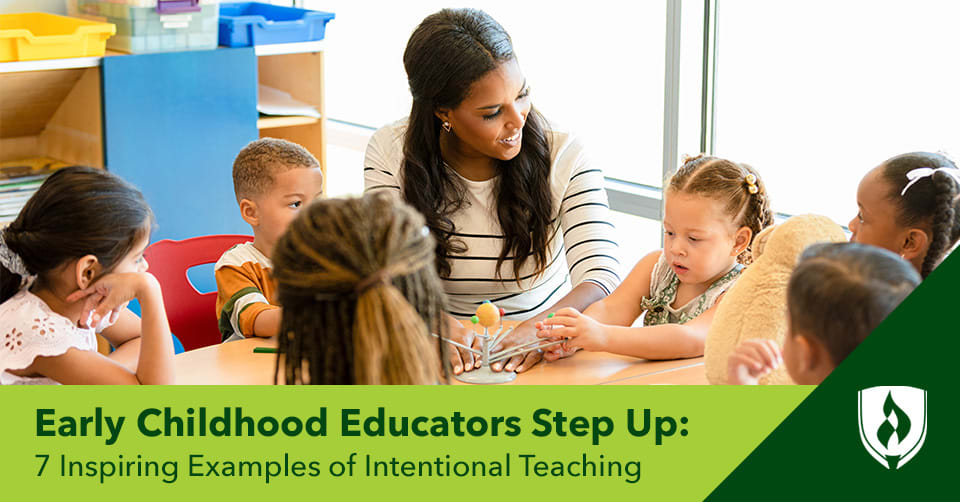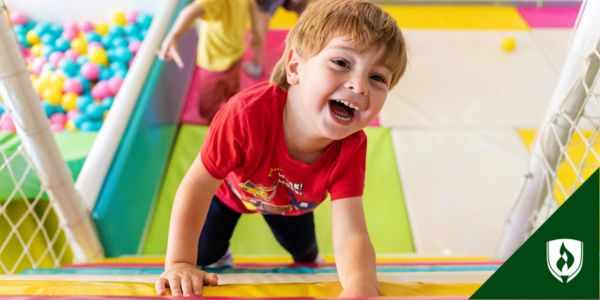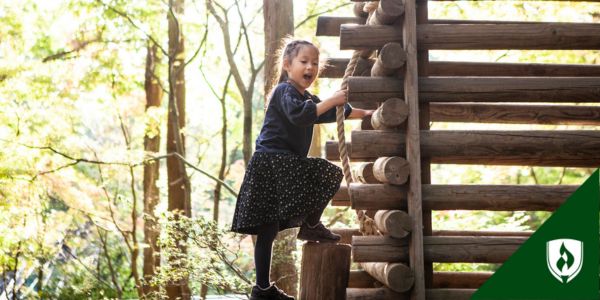Early Childhood Educators Step Up: 7 Inspiring Examples of Intentional Teaching
By Brianna Flavin on 04/04/2023

It’s no secret that the last few years have been hard on children, caregivers and educators. The COVID-19 pandemic threw schools and childcare centers into a tailspin of navigating changing health and safety regulations.1 The changes in routine and potential loss of childcare put immense pressure on children and their families. Early childhood education (ECE) professionals experienced many of these pressures in their personal lives, on top of navigating a lot of change in their work environment.
It hasn’t been easy. As schools and childcare centers adjust to 2023, teachers are caring for many children whose families have been through an extra dose of hardship. Now, educators and childcare providers all over are pushing themselves to help the children in their care.
“When we first came back [after the initial pandemic shutdown] there were challenges,” says Heather Spoto, lead teacher at Bright Horizons. “Kids came back needing transition. They’re going through as much stress as we are but can’t articulate it like we do.” Spoto says she and her colleagues felt the importance of supporting not only the kids, but also the families.
Spoto has noticed more families reaching out for support and communication. “I think many families came back with new respect for the work we do.” A decade ago, early childhood education was often treated more like babysitting or daycare. But as we’ve learned more about child development and how critical the early years are to future learning and wellbeing, many ECE professionals have been practicing intentional teaching.
Intentional teaching is both important and challenging work, especially when care environments experience turbulence. But as you’ll see, these ECE experts step up in beautiful ways to support their young learners.
What is intentional teaching?
“When I define intentional teaching, my focus is on the word intention– or more specifically–teaching with a purpose,” says Sally Macaluso, special education preschool teacher and education blogger at Tenderhearted Teacher. Macaluso explains that early childhood educators tend to be pretty intentional by nature, planning learning experiences and activities based on their students’ needs and interests.
“Intentional teaching is going back to the idea of purpose—WHY are we using these resources, asking these questions, setting up this activity?” says Sarah Hurst, teacher and blogger at Arthurwears. Hurst says intentional teachers will set a deliberate outcome, asking if activities contribute to that goal.
Intentional teaching means educators need to constantly reflect on their choices, according to Hurst, but it doesn’t mean the teacher leads everything. “A teacher can fully immerse themselves within the child’s self-chosen play, take on a role within that play and then be intentional with the language they use, and the questions they ask during play,” Hurst explains.
If you are thinking this sounds like a lot of extra thought and work, you aren’t wrong. Children can learn a lot through their own exploration and play. But intentional teachers understand that weaving a learning goal into the day is powerful to help children advance.
“Additionally, they understand that almost every interaction throughout the school day is a teachable moment for young children—whether it’s during snack time, free-choice centers, or an early literacy or math activity,” Macaluso says.
Intentional teaching examples
It’s excellent to have intentional goals—but integrating them into a classroom is easier said than done. Look to these ECE experts for some intentional teaching inspiration!
1. Let the lesson change to follow learning
Intentional teaching does not mean holding to your curriculum plan with an iron fist. More often, it means being flexible with lessons and activities while you stay close to your larger purpose to help the children progress in their learning. “As a NYC-based school, we were once learning about the Statue of Liberty and how it was a gift to America by France,” says Amanda Vierheller, COO of Playgarden Online.
The lesson was supposed to be about architecture, but the children started asking questions about what gifts other countries have given one another.
“Together, we researched these gifts and the conversation morphed into a lesson on friendship and what countries can achieve for the planet by working together,” Vierheller says. Even though it wasn’t the plan, the lesson wound up being more powerful because the children were totally engaged in guiding it. Instead of having everyone make the Statue of Liberty, Vierheller supported the children in choosing which country’s gift they wanted to create and talk about.
“A lesson on architecture became a more important lesson on global connection and allowed each child to choose a subject they were most passionate about, leading to greater discovery of both history and themselves.”
2. Supplement the play they like best
One child’s next steps were to count out from a large number and understand the concept of more and less, Hurst recalls. But this child was mainly interested in playing “shop” or with malleable materials. So Hurst made chocolate playdough and gathered empty chocolate boxes, a cash register and some containers into the shop area.
“I waited for the child to choose to play within this area, and then when appropriate, I joined in their play as a chocolate shop customer.” Hurst then asked the child for a certain number of chocolates. “I then pretended to eat one, and told them ‘oh no, now I have one less,’ or, ‘actually can I have one more? How many is that now?’ I modeled counting out, checking and finding a total—all while playing.”
3. Come up with learning moments on the fly
Intentional teachers know even the youngest learners have their own volition—and learning is more successful when they engage in something because they’re excited about it.
“There is a misconception that the early years are easy,” Hurst says. When people see early childhood educators on the floor, playing with the children, they sometimes assume the role is nothing more than babysitting. But in reality, Hurst points out you have to think quickly in each moment to incorporate your teaching into play “to make learning as fun and as playful as possible so that children will choose to do it.”
4. Role-play social interactions
Massive achievements for children might not seem like that big of a deal to outsiders. But educators who work with these little ones every day see how continued work and reinforcement can add up to a huge step forward.
“I think I feel most successful as a teacher when I see a student start to generalize the skills they’ve been taught, through modeling scaffolding or role-playing to complete tasks independently,” Macaluso says. She teaches preschoolers with language delays and says they often start the school year with limited communication skills that lead to frustrations when they interact with each other.
“I feel immense pride when I observe a child—who once didn’t have the words to initiate play—turn to a peer and say, ‘would you like to play with me?’”
5. Pay close attention to support each child
“I had a young boy in the class who was having really strong emotions and didn’t know how to create coping mechanisms for himself,” Spoto says. When she talked to the parents, she learned they were having the same struggles at home. Spoto met with the family once a week to talk about strategies and to keep communication open. “We observed the timing of his tantrums carefully, and realized he just needed some different supports through the day.”
They added more cozy areas to the classroom, for when he needed space to himself. When Spoto realized he also needed a break from the classroom environment, they arranged for the child to sit at an administrator’s desk and color for a bit each day. Without paying close attention to the child’s needs, they wouldn’t have found the changes he needed.
6. Arrange the classroom for targeted exploration
Intentional teaching happens even before the students walk into the room. Intentional teachers consider their objective for the day, the week, the year, and think through ways their environment can support that learning.
“I arrange a physical space that allows them to easily access materials and explore their environment,” Macaluso says. Maybe this means re-arranging areas for more side-by-side play options during a focus on social skill development. Or maybe it looks like adding easy-to-reach piles of items for pattern-making or counting. When you think through how the children might use the space, you can arrange it to fit learning goals.
7. Start with trust and laughter
“You want them to laugh with you and have a good time,” Spoto says. “Don’t make it harder than it has to be.” She has one class that fell in love with the way she did the “five little pumpkins” song for Halloween.
“They love that song. That’s their jam. No matter what they are doing, when I come in the room, we have to stop everything and do the ‘five little pumpkins’ song,” Spoto laughs. It’s gotten to the point that even the 18-month-old kids in the room sing along. She notes that merely through hyping up and loving this song together, they’ve been learning rhyme, some math concepts, and really great interaction skills.
The kids feel the safety of laughing with a trusted adult, and they are learning in their delight. “All these things from this five little pumpkins song. The kids adore it, and they adore the way I do it. They say it’s ‘Miss Heather’s song.’”
ECE providers make the classroom what it is
When families walk into a childcare environment, they might first notice the decorations, the colors, the size of the space or the toys and tools available. But the child’s experience will ultimately come down to the people who work in that space.
In the first five years of life, it’s all about social emotional development, according to Spoto. “That’s the foundation they build everything else on.” She explains that when children feel loved and cared for, they will feel safe enough to try new things and learn. “Intentional teaching means making sure you understand each individual child’s needs and making sure you are there for them.”
Learning how to write their name or how to count will come when that foundation is strong, Spoto explains. “They will learn it themselves because they trust that they can.”
If you like hearing about what amazing teachers are doing in ECE and what this role is really like, check out " An Educator's Survival Guide for Dealing with Difficult Parents" and Why Become a Teacher? Preschool Educators Share What They Love About Their Work.
Related Articles:
- What Is Trauma-Informed Education? What ECE Pros Should Know
- Teacher Assistant Duties: What You Can Expect on the Way to Leading an ECE Classroom
1 Griffin, Kelley. National Conference of State Legislatures (NCSL). “Wake-Up Call for Child Care as Pandemic Exposes Troubled System” (2022). https://www.ncsl.org/news/details/wake-up-call-for-child-care-as-pandemic-exposes-troubled-system




